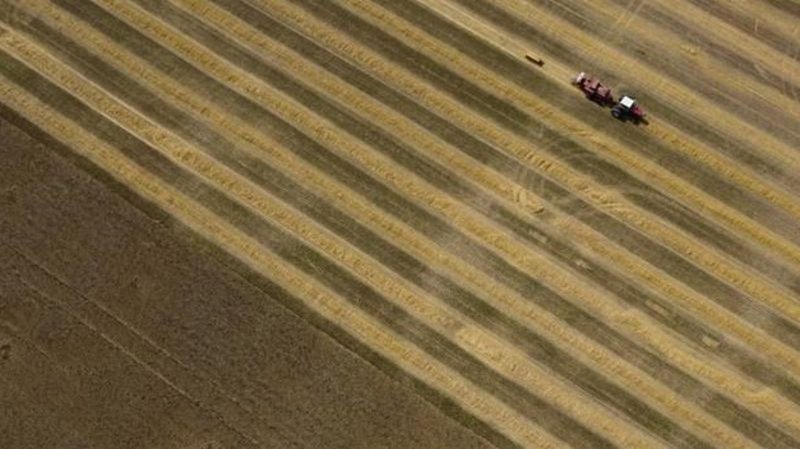Government figures suggest that fertilizers account for a growing share of the 10% of Canada’s greenhouse gas emissions that come from agriculture. Agriculture Minister Marie-Claude Bibeau said cutting these emissions by nearly a third by 2030 is ambitious but must be accomplished.
“We have to have a destination,” she said in an interview last month. “So we have a goal that we’re aiming for.”
Government and farmers trust an approach known as the 4Rs: right source, right rate, right time and right place.
This means measures such as slow-release fertilizers that give the soil time to absorb nutrients. This means understanding the terrain well enough to know which plots need more and which need less. This means not applying fertilizer when dry or using two small applications at different times instead of one large one.
It might work, said Karen Proud, president of Fertilizer Canada, but maybe not in the seven growing seasons Ottawa has given farmers.
“It’s possible if 100% of acres in Ontario and Quebec and 60-70% of all agricultural acres in Western Canada adopt our most advanced nutrient stewardship practices,” said Proud.
“But we know that given where we are today, we will never reach 100% of the acres in Ontario and Quebec. And in the short time we have between now and 2030, we are certainly not going to reach 60-70% of all acres in Western Canada.
Proud’s group recently published a report suggesting that a 14% reduction by 2030 is more realistic.
Fertilizer use goes beyond just using fertilizer, Currie said. If farmers are to use the latest technology to get the most out of chemicals, they will need the kind of internet service that is unavailable in many rural communities.
“It’s this precision technology that’s going to help us be even better at our farm inputs, which will help reduce emissions,” Currie said. “(We have to) get the government to get really serious about getting 5G and broadband coverage.”
Carbon markets or credits to encourage farmers to adopt low-emission practices would also help, he said.
“It’s not that a farmer is going to take out a mortgage on the sale of credits, but it’s another tool that we can use,” Currie said.
Proud said the government was going to have to spend money to help farmers adapt.
“What we are asking the government to do is sit down with ourselves, with farmer groups, with farmers to talk about these barriers to adoption and then how can we work to reduce them” , she said. “Part of that can be investing in more education at the farm level, so they better understand the benefits of the 4Rs and how it really helps increase productivity.”
Bibeau said the government is committed to bringing 5G internet to 98% of Canadians by 2026, if the provinces cooperate. She also said she was listening – consultations with farmer groups began in March and recently ended.
“I think we’ve demonstrated over the years how open we are and how much consultation we can do,” she said.
Bibeau said Ottawa has boosted the $3 billion Canadian Agricultural Partnership Agreement by $500 million.
There are other ways to reduce fertilizer emissions than just using them more efficiently, said retired University of Guelph agriculture professor Ralph Martin. Most of the emissions come from the fact that fertilizers are made from fossil fuels, he said, so why not look for nutrients from another source?
“What we really should be looking at is human sewage.”
Eliminating waste in agricultural production would also reduce pressure on fertilizer-induced high yields, Martin said.
He said that fertilizer use and agricultural prosperity are not necessarily the same thing.
Fertilizers can create higher yields, but they also increase expenses. Many farmers might be happy to use less fertilizer, but they need incentives to make the switch.
“Farmers have a lot invested, a lot of dollars at stake,” Martin said. “If we had incentives, I think farmers would respond.”
Bibeau said she is optimistic the goal will be achieved. Fertilizer Canada’s estimate of a 14% reduction is good news, she said.
“It’s already great. There will be new practices, new inputs, new technologies that will develop in the months and years to come.
Farmers are on board, Currie said. They just need realistic plans.
“We were never willing to do our part. But the government needs to do a better job of communicating where it wants to go and how.
This report from The Canadian Press was first published on November 3, 2022.
— Follow Bob Weber on Twitter at @row1960
Bob Weber, The Canadian Press

“Amateur web enthusiast. Award-winning creator. Extreme music expert. Wannabe analyst. Organizer. Hipster-friendly tv scholar. Twitter guru.”
